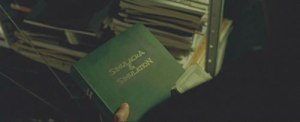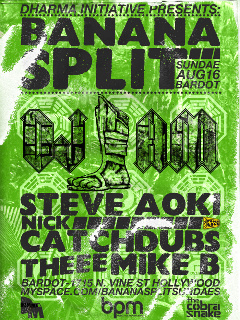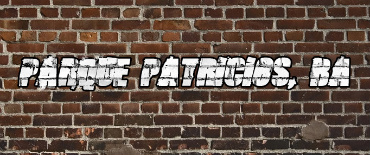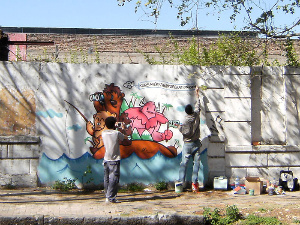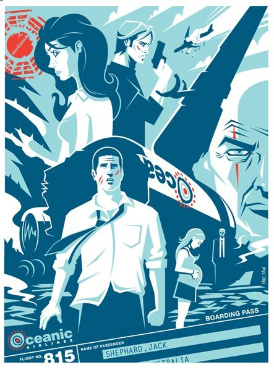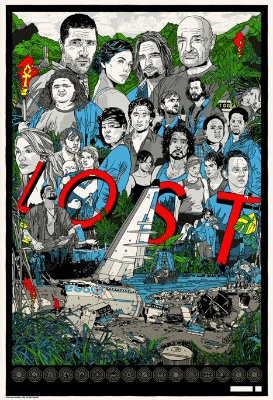From Stone to Screen:
The Changing Nature of the ‘Page’
[The internet] is astounding technology, and we should just take a moment to celebrate the power and reach that it gives us.
– Stephen Fry, The Virtual Revolution
Welcome to my page. The vicissitudes of the past 6 months, from October 2009 to March 2010, really opened my eyes with regard to what I here christen “The Changing Nature of The Page”. I think that the way in which the ‘page’ has changed with the birth of the digital age is, in Stephen Fry’s words, astounding, so I will discuss this at length here. Put crudely, there are two main areas that I want to examine: 1) ACADEMIA and 2) COMMUNITY. As I delve further and further into how these areas of life have become forever mutated by the changing page, I will subdivide them into smaller categories as necessary.
1. ACADEMIA :
So in what way has the page changed in relation to the development of the academic sphere? The advent of the digital age resulted in the ongoing and rapid evolution of how information is stored and shared. There is an article called ‘Multimedia and Multitasking: A Survey of Digital Resources for Nineteenth-Century Literary Studies’ , writted by John A. Walsh, which appears in A Companion to Digital Literary Studies . In it he mentions that “digital media, particularly the World Wide Web, are excellent platforms for presenting multimedia primary works and related scholarship.” The dynamic digital page has made it very easy for scholars to share and collaborate with each other; one of the greatest benefits of this is that it allows for the birth of a sort of ‘literary polygraph’. Walsh juxtaposes this with the ‘lonely pursuit’ of literary scholarship of years past which produced the monograph, a piece of work that would have been available only to an elite few in the academic sphere:
– Traditional literary scholarship is often a lonely pursuit – solitary work devoted to the production of a monograph. Digital literary scholarship, on the other hand, is generally social and collaborative with scholars, students, librarians, and technologists working together to produce a scholarly product with more functionality, further reach, and potentially wider appeal than the traditional monograph.
This entails very exciting prospects for academic publishing; now instead of having to wait for a book to be written and go through the usual channels of distribution before it can be critiqued by other scholars, this process can happen before the actual publication, making the end product a much more informed piece of work; a scholarly polygraph with ‘more functionality, further reach, and potentially wider appeal than the traditional monograph’. A good example of what can be accomplished with the modern digital page is the William Blake Archive . On one level, the internet could be understood as the successor to the printed book but first I want to discuss the varied and rich history behind the different types of information systems.
1.1 INFORMATION SYSTEMS:
The most primitive way (but hardly the worst or least effective, depending on the situation) in which we can pass on information is through our bodies – the sounds we make, the way we move, and other body language such as facial expressions and hand gestures. Socrates famously wrote nothing and yet laid the fundamental and essential blocks for our modern western philosophical tradition. Writing however first developed in Mesopotamia over five thousand years ago in the form of pictograms written on clay tablets; the first ‘page’. They were used to record basic information about crops and taxes. Egyptian papyrus followed two thousand or so years later. This was a huge evolutionary leap, considering it succeeded the stone tablet, because this new ‘paper’ allowed for much greater portability and ease of use than stone (e.g. it could be rolled up and folded). The steps involved in the production of papyrus are quite sophisticated and included extracting the marrow from the stems of a papyrus plant, humidification, pressing, drying, gluing, and cutting. Papyrus was eventually replaced by parchment in the form of vellum; mammal skin. The Romans used wax coated wooden tablets upon which they wrote using a stylus (‘codex’ is Latin for ‘block of wood’). Paper, one of the ‘Four Great Inventions of Ancient China’, and woodblock printing developed and became popular in China and East Asia generally from around the second and first centuries B.C.
1.2 BOOKS:
Paper of course became the staple worldwide information system and eventually gave birth to the ‘book’ – the origins of which lie in ancient Rome. Holes were drilled in two wood blocks (mentioned above) which were then tied together, forming a device which could be opened and closed; wax was on the inside on which one could write with a stylus. Eventually however, the wax was replaced by paper.
Society today is awash with books. If we understand the term in a broader sense as “A set or collection of written, printed, illustrated, or blank sheets, made of paper, parchment, or other various material, usually fastened together to hinge at one side”(seewikipedia ), then we would rarely go one day without reading or even buying some sort of book. Novels, magazines and newspapers are probably the most common forms. They are an excellent and, compared to say, a stone tablet, more mobile and cost-effective way of spreading information that their predecessors. However, there are some unavoidable problems that will forever be attached to our reading and producing of books.
1.3 PROBLEMS WITH BOOKS AND SOLUTIONS OFFERED BY THE INTERNET:
The main problem with books is that their pages are static, physically confined and not interactive. That is to say, when we read a book we can never have access to anything not contained on the page itself; one would instead have to read a different book or consult some other source to further explore the idea in question. Readers of Joyce’s Ulysses may wish to find out more about Telemachus (which refers to the son of Odysseus in Homer’s Odyssey) upon learning the title of the first chapter but would be unable to do so. A secondary source is needed; a classics dictionary perhaps. Another pressing problem is that books require a lot of paper on which to display this static information which can, in the event of mass production, have obvious adverse environmental side effects due to a decrease in the number of trees.
These problems are eradicated with astounding power by the internet. There is a world of data and metadata (and metametadata , and so forth ad infinitum) available at the surfer’s fingertips. Let me return to my previous example: Ulysses can be read online here and a very comprehensive and in-depth description of Telemachus can be found here without the need to search numerous different resources (here of course the reader is consulting two different sources but the point is that they are both contained within the internet, which I understand as a single source in itself). The internet is of course also a great alternative to the printed book because web pages are easily published and no paper is needed to create them.
I wish to further elaborate on one more excellent example of how the internet has dynamically changed the page by discussing Rotunda; specifically John Bryant’s ‘Fluid-Text’ edition of Typee by Herman Melville . After downloading a trial username and password that grants access for a 48-hour period, viewers can explore Melville’s own original manuscript in tandem with Bryant’s transcription. I am utterly fascinated at the implications this sort of dual-learning experience could have for the academic sphere. Having the ability to compare different editions/interpretations of a document at (literally) the click of a button can reveal interesting, and undoubtedly significant, heuristic aspects and unfoldings in the text which would otherwise never have been obvious. For example, why (in F 01 r of the manuscript; P 01 of the transcript, line 23) does Melville change ‘shirt’ to ‘frock’? Does this change hold any significance? The digital nature of the edition allows Bryant to include a wealth of commentary, in the form of hyperlinks, about changes made by Melville to the text, adding further scope for how the text could be understood. It is thanks to digital editions such as this and the Quartos.org versions of Hamlet that allow for a much more informed, richer and, arguably, accurate interpretation of the respective texts. The thought of being able to interact in such complex ways with some of my own favourite books is really exciting; I would love to see the original drafts made by George Orwell (a.k.a. Eric Arthur Blair) to 1984 or Animal Farm to see if any significant changes were made in the initial stages of production of the books I have read and love.
Google Earth is another compelling example of the possibilities opened up to us by the new dynamic page. It embodies everything that makes this digital page far superior to the paper one; in Google Earth’s case we could understand its static paper counterpart as an atlas. Aside from being able to pinpoint any location in the world within (usually) a few seconds, there are other features available in the latest edition (edition 5), such as Google Moon, Google Mars and Google Sky, the ability to create virtual tours and pathways, a customisable ‘Place your own marker’ at personal sites of interest; your home or place of work for example, a ‘How to get from point-A to point-B’ feature is also included as well as a wealth of practical information such as addresses and phone numbers for different institutions. Let’s say somebody is planning a holiday to Paris; they could use Google Earth to obtain some indispensible information such as the distance from Charles De Gaulle Airport to the city center (of course this information could be discovered merely in terms of measurement of kilometers, but Google Earth also offers a visual representation of this information which is arguably much more useful than a static number), or the proximity of a certain hostel or hotel to tourist attractions such as the Louvre or Eiffel Tower. Most of the more populous cities such as capitals and primate cities have three-dimensional representations which makes for a particularly stimulating experience, not merely from an aesthetic point of view, but also from an educational one.

Above is the 3D embodiment of the Hungarian Parliament Building (Orszaghaz) which lies on the east bank of the Danube in Budapest. Notice each small blue square; each one of these is a different photograph of the location. One will also usually find embedded Wikipedia hyperlinks containing detailed information on what one sees on the screen. One would never be able to get this kind of interactivity or volume of information in a paper book.
1.4 MUSIC:
Music has also changed profoundly on account of how the page has mutated and I believe that these changes are still only in their infancy. First of all, sheet music is now widely accessible because of the internet. I am a pianist and am indebted to the uploaders of nearly all of the sheet music I now own; without them I would probably not be able to play anything. Aside from sheet music however, there are hundreds, probably thousands, of web pages out there offering varied and very useful information in relation to everything musical. For example, an excellent introduction to music theory can be found here , while a detailed analysis of the piano, from its origins, to tuning, to tips on caring for it, can be found here. Each of these pages are interactive and embedded with many hyperlinks, allowing the viewer access to more information than any physical book could hope to offer.
I predict (and sincerely hope) that sheet music will eventually follow literature in the same way as Rotunda’s Typee. By this I mean that one day we will be able to compare a completed, published piece of sheet music with the composer’s original handwritten manuscript, preferably in the same sort of way as Bryant’s Fluid-Text Typee (i.e. the ability to compare every possible version side by side to check for differences; sort of like a ‘spot the difference’ exercise!). There is an indispensible opportunity here for the contributor to include very helpful side notes and hyperlinks. Examples might include defining what a fugue or etude or overture is, or including a description of the culture and society in which the particular piece of music under examination was composed, or including details of the composer’s life, or linking the viewer to other web pages which contain similar material. The possibilities are endless and each one would be an example of how the page has evolved, becoming less static and much more interactive than the traditional page. In fact, this idea has already been developed in relation to Medieval music and viewers can access the site here. Although there are at the moment only images, I would keep an optimistic eye on this site and hope for it one day to include music of all ages and genres, with each piece accompanied by detailed scholarly interpretation.
The original manuscript of course may very well be loaded with very significant or very subtle heuristic elements; crossed-out notes, last-minute accidentals or altered dynamics are but a few potential possibilities. I would love to see this feature because I think it would be fascinating to search for any changes made by the composer before finishing their piece. For example: what if Beethoven had originally planned to write the first movement of the moonlight sonata in a different key? What would it sound like then? Or what if Pachelbel had initially written a slightly different (or even very different) harmony or melody for Canon in D Major? Did Tchaikovsky ever have different dynamics in mind when writing the 1812 Overture? An example of what I’m talking about might look something like this:


As you can see, this sort system allows for comparison side-by-side of the finished product and the original product, complete with all of its mistakes and alterations.
1.4.1 COMPOSING AND EUDAIMONIA : After reading about and researching music theory I’ve begun composing some very simple pieces; I could not have done this without the indispensible help of a dynamic page. I am referring to a program called Finale. This is an excellent composition tool and includes all the necessary features to compose music. The composer can select the instrument(s) for which they are composing, time signature, key signature, as well as the style and appearance of the sheet music itself. Here is an image of a piece composed with Finale (note all the editorial tools listed in the top quarter of the window – you would not get these on a static page):

The very clever aspect of using a tool such as this is that it disallows the making of mistakes. Let’s say for example the composer is creating a piece in a 4/4 (usually referred to as ‘common’ time, and is therefore notated simply by a ‘C’). They will then only be allowed four crotchets per bar before the program intervenes and prevents the addition of a fifth. This would be a pretty difficult mistake to make considering you’re only dealing with four notes, but when you take into account that four crotchets is equal to sixty-four hemidemisemiquavers (what a mouthful!), you would have to have kept track of sixty-four notes in one 4/4 bar! This could be quite a difficult task, but not so much when using a program like Finale because if you try to insert more notes or more rests than are allowed in the bar it will prevent you from doing so. This is a great way of learning because the trial and error involved in this sort of exercise reminds the composer of mistakes they would have made if they were simply writing the notes with a pen and paper.
One further excellent feature of this program is that it allows the composer to change the key signature at any time. This is called transposition and can be done with one measure, or the entire piece; whatever the composer wants. This is especially useful for experimenting with what a piece sounds like when its tonal center (i.e. its key) is shifted. For example, say the composer finishes writing a piece in the key of G minor, listens to it, and then decides that this particular key does not embody what she had originally intended. She may wish to transpose it to C# minor for example. Here is what the transposition tool looks like in Finale:

I find this aspect particularly captivating because I strongly believe that a piece of music should be heard in all twelve possible keys. For example, Pachelbel wrote Canon in D major; what about Canon in C major? Or A major? Twelve notes make up the chromatic scale and each one has its own unique key. Therefore, for any piece out there, you are only listening to one out of at least twelve versions! Originally I learned Canon in D major on the piano and it was a very worth while exercise going back over it and learning to play it in some of the other keys. It’s like hearing a description of an event from different perspectives; they each describe the same event, just in different ways. The point here is that a pen and paper could never offer these kinds of features. A dynamic page can.
I am also a philosopher, and from a philosophically charged viewpoint I would strongly claim that the dynamic page, in the form of programs like Finale, easily accessible sheet music, and viral video (which I will mention later) has greatly enhanced my own personal eudaimonia . This is an Aristotelian term which loosely means ‘human flourishing’. Without the internet and the dynamic page I would have had a very limited scope in which to develop any musical interest or skills at all. But because I have had this opportunity, I have and still am, I believe, flourishing a great deal as a human being.
2. COMMUNITY:
There is of course also a very powerful social aspect to the internet and the dynamic page. My focus now is still on the interactive sharing of information, but in a more informal, non-academic setting. Naturally, there exists some overlap between the academic and community spheres; neither is absolute in itself. The community element innate within the web has led to what Dr. Aleks Krotoski of The Virtual Revolution refers to as the ‘great leveling of humanity’; the construction of a more egalitarian plateau on which more knowledge than ever before can be shared. In Chapter 12 – New opportunities in Africa , Krotoski comments on how ‘today, all around the world, being connected is empowering people’; her case study is a farmer called Kudjo Agbevi who now uses the knowledge provided by web to grow crops more efficiently. This is a great example of a practical way (from an academic and communal perspective) in which the dynamic page can improve our lives.
2.1 FORUMS:
An example personal to me of how the digital page is a great collaboratory device is that of forums. In the past, I’ve had MANY hardware and software problems – nine times out of ten I will find a solution to these problems on a forum somewhere on the web. When my speakers start crackling or my mouse stops working, my first port-of-call isn’t the Dell or Apple or Microsoft helpline – it’s a forum. There is a refreshing sort of heuristic element to watching a problem unfold and, hopefully, become solved throughout the posts of a forum. You can usually trace the steps from A to B to C and see exactly how the problem in question was solved, or how it might be solved, based on the experience of others. Unfortunately, a common problem is that sometimes the language used on forums can be overly esoteric – not everybody may know what a codec or a trojan is, but if that’s the case, then most people probably won’t mind looking up the definition if it may help them in solving one of their technical problems.
What’s also very refreshing about forums is the (general) lack of advertising. Whatever about adverts in the margins down the side of the screen telling you how you can become ‘ripped and hunky in only 4 weeks!’, the conversation in the forum (I find) rarely falls victim to bias. Let’s say you’re thinking of buying an iPad. Obviously, you could visit the Apple website where they’ll tell you how this new product is ‘magical and revolutionary, at an unbelievable price’. Or you could visit a forum where you (might) discover that it has poor battery life, or how the chassis is weak, breaking after being dropped from a relatively low height. My point here is that forums aren’t polluted by advertising bias; usually, contributors to forums, when reviewing something, will give you honest opinions. Once again, this an example of how the dynamic digital page, riddled with hyperlinks, images, video and sound, can spread easily accessible information around the globe in an incredibly fast and efficient manner.
2.2 SOCIAL NETWORKING:
In recent times, the changing page has allowed for people to keep in contact with each other, regardless of spatiotemporal barriers. Instant messengers like MSN and Yahoo are some typical examples. Facebook is clearly an evolved instant messenger in that it includes not only an instant messenger ability, but also contains other features which are still available to the general online community even when others are offline. For example, Facebook allows people to upload pictures which are then accessible by their online friends even when they are themselves offline. When we juxtapose this type of page with its predecessor, which we could take to be the static paper letter or the postcard, we can see the obvious advantages it offers. Now, instead of writing a letter which, depending on its destination, may take in excess of a week to arrive in the hands of its intended recipient, emails can be written and received in a fraction of the time. Of course, emails and online messages lack a certain charm and sentimentality in that they have no tangible qualities, unlike a postcard for example. This however is, I would argue, but a minor quibble with the nature of the digital community sphere.
An increase in bandwidth has allowed for the transfer of more bits per second along channels. This in turn has allowed for the mass sharing of video information over the internet. Skype is an excellent example of how the social page has changed dramatically. I keep in regular contact with a friend from Chicago and even though we are separated by many miles over the Atlantic we can still see and talk to each other as if we were both in the same room. The only significant drawback is that you’re interacting with a mere 2D video image but this is a small price to pay for what we are allowed. Perhaps from a more creative and educational aspect (the community and academic sphere overlap here), Youtube is another manifestation of essentially the same thing; sharing information over a dynamic and interactive page.
2.3 YOUTUBE:
Youtube is definitely the global viral video hub. There are millions and millions of hours worth of footage uploaded, and although there is a lot of trash, there is a lot of gold there as well. From a community perspective, people use Youtube to share videos with their friends, families, and usually any other stranger who happens to stumble upon it. An Irish friend of mine recently got married in Brazil; after first having a (digital) face-to-face discussion with him on Skype I was then later able to see the ceremony because it had been recorded and uploaded to Youtube. This of course could never have been done before through the paper page or the telephone. In a lecture entitled An anthropological introduction to Youtube given by Michael Wesch on the 23rd of June 2008, he (Wesch) says that “[the web] is not just about information, but it’s actually about linking people, and it’s about linking people in ways that we’d never been linked before.”
As a learning tool, Youtube for me was and still continues to be indispensible. There have been many times in the past (as I’m sure there will be many times in the future) where I had no clue how to use a particular computer program; take CoffeeCup HTML Editor for example (I’m referring particularly to computer programs to narrow down the examples to a reasonable number here). Learning how to use this program was a necessary component of the same college module for which I am now creating this webpage. There was no shortage of CoffeeCup tutorial videos on youtube (which can be found here), some of which I consulted when beginning this project in order to get a better grasp of how to use the program. I have also used Youtube tutorial videos to learn how to use Sony Vegas and Fruity Loops Studio; two pieces of editing software which, thanks to the Youtube community, I can now use much better and efficiently to produce music and video projects.
Returning to the music aspect, Youtube was one of the main contributors to my developing an interest in music. Initially, I got my inspiration by watching hundreds of videos people had posted of themselves playing piano pieces I knew I wanted to learn myself one day. These videos really helped because after spending much time studying the hand and finger movements of these players I eventually realised that the sound of the music was deceptively complex for the relatively easy way in which it can be played. That is not to say that playing any instrument is ‘easy’ – far from it – but spending enough time looking at other people playing made it, for me, a much less intimidating task to undertake. In the early days, Youtube was my music teacher; it taught me what ‘Middle C’ is, what ‘#’ means, and what a ‘flip’ is. Without this sort of fundamental groundwork I would not be where I am today, musically speaking.
CONCLUDING WORDS:
I hope I have explained on this webpage, from a personal perspective as well as a more general one, just how invaluable the new digital dynamic page is, and how the page in general has evolved from stone to screen. The possibilities opened up to everyone everywhere because of this new page are quite frankly, mind boggling. Tim Berners-Lee’s paper written just over two decades ago, in 1989, proposed then what is now the World Wide Web. His supervisor, Mike Sendall wrote the comment, “Vague, but exciting” on the paper; probably one of the greatest euphemisms of which I know. Aleks Krotoski instead refers to the web as ‘the defining technological revolution of our lifetimes’; this I think is a more accurate description.
Posted in Digital Humanities, scholarship, Uncategorized
Tags: digital images, imagery, music, photography, Reading, transmission, writing
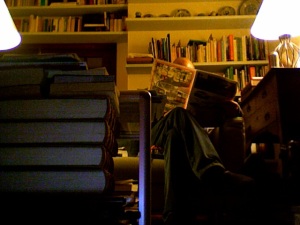 Back in October of 2009, I chose the topic of e-Books, partly because this technology was new to me and I had little understanding of it, but mostly because I was prepared to fight against it. As a passionate ‘physical’ book lover, I was determined to find fault with this form of text, but to my surprise, the more I researched the topic and engaged with the new format, the more I learned to respect and even like it, and most of this has to do with the way in which we engaged with digital literary studies within the seminar.
Back in October of 2009, I chose the topic of e-Books, partly because this technology was new to me and I had little understanding of it, but mostly because I was prepared to fight against it. As a passionate ‘physical’ book lover, I was determined to find fault with this form of text, but to my surprise, the more I researched the topic and engaged with the new format, the more I learned to respect and even like it, and most of this has to do with the way in which we engaged with digital literary studies within the seminar.
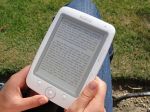

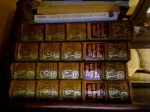
 Many argue however that downloading music is not an offence as it does not fall into the legal category of theft. Legally theft is the stealing of another’s property but downloading music is not depriving another person of something. The website
Many argue however that downloading music is not an offence as it does not fall into the legal category of theft. Legally theft is the stealing of another’s property but downloading music is not depriving another person of something. The website 






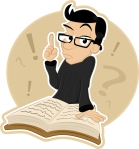
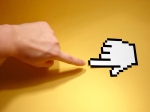


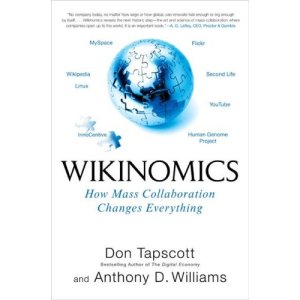


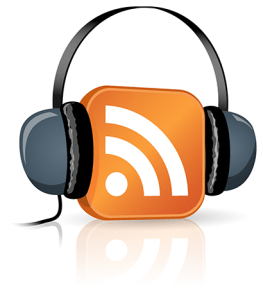 <
<





